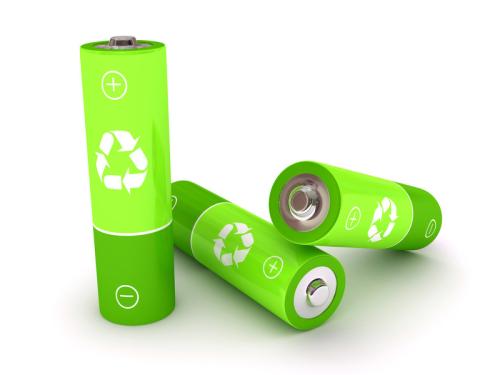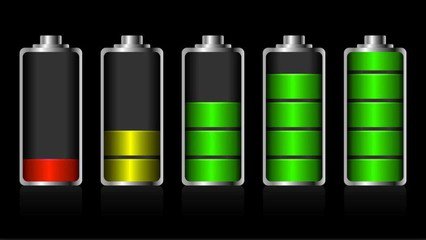Your Complete Guide to Recondition Li Ion Battery!
Nov 06, 2019 Pageview:2152
In about 1912, a scientist named G. W. Lewis started working on batteries that were powered by lithium. That was when the concept came into being. However, they were not formally introduced until the early 1970s. The anode in these batteries is made up of Lithium. Their main redeeming quality is a high-density charge. They can produce a high voltage of 1.5V to almost 3.7V. This sets them apart from the other commercially available batteries. The voltage is lithium dependent. The main deciding factor of the volt is the quality of lithium-ion used and the designing of the battery. They have a long-lasting life but they also generate a higher cost per unit. There are six different types of lithium-ion used in different batteries. All of them have their own set of pros and cons. However, the best suited is Lithium Iron Phosphate (LiFePO4). This electrode is safe to use and is tolerant of abuse. This also provides long life and great thermal balance. These days lithium-ion batteries can survive many charging cycles but they are bound to die at some point. They are usually used in handheld devices. The other electrode used in these batteries is made up of graphite.
There are millions of applications of Lithium-ion batteries. Most commonly they are used for medical purposes. They are also used in personal assistants. The use of lithium-ion batteries is endless. Such as PDAs, blood pressure/ diabetes meters and many other portable devices. When compared to the alkaline batteries these batteries are higher in cost. But the bonus of a long life makes them worth the few extra dollars that we have to pay. You can also recondition them and you don’t have to replace them now and then.
The bonus of Lithium battery is that it does not poof out harmful gases, like oxygen and hydrogen. Also, Lithium batteries boost a strong molecular bond among their ions. Which gives them the signature long life and thermal balance. Another good thing about these batteries is that it can house electrical energy equal to almost three or four alkaline batteries. Yet it is portable and compact. This gives it an edge over the other available batteries.
Even though lithium batteries boost their long life, they do die at some point in their life. But the good thing is that they can be reconditioned.
Can you recondition a Lithium ion battery?
A lithium-ion battery might look as if it has died and completed its life. But before you decide to get rid of it, try to bring it back to life. Lithium-ion batteries can be reconditioned and one should at least try to do it before disposing of it. There are a few things that you can try to bring it back to life.
How to recondition a Lithium ion battery?
· Here is a list of steps to try at home to try:
Step 1: Do the voltage test:
A starter way to check if your battery is dead is to check the voltage. Power off the device and remove the battery. Now use a voltmeter to note down the voltage. Lithium-ion batteries tend to be drained if they are charged too much. So if your battery can produce 3.7V and the meter is showing 1.6V or less than it is in sleep mode.
Step 2: Use a recovery charger:
Some chargers have the tendency to recover or wake up a battery, if you can find one such charger you can do this step. But please do remember that you can only use this with a battery of larger volts. If the battery is smaller than 1.5V then this step won’t work. Also insert your battery carefully and according to the poles.
Step 3: Check the voltage:
Again connect the battery to a voltmeter to check the voltage across the battery. You can also use the user manual to check if the process of waking up is complete. Sometimes this process might not work, so if this step does not work, then you should buy a new battery.
Step 4: Charge and drain the battery:
Return the battery to its original charger and let it charge for a minimum of 3 hours. The time depends on the type of lithium-ion battery. Some chargers convert from recovery to charging themselves. Then discharge the battery completely. To drain the battery connect it to a high voltage device like a torch or flashlight.
Step 5: Freeze and thaw the battery:
Put the battery in an airtight bag and pop it in the freezer overnight or for 24 hours. Take it out of the freezer after freezing and then thaw it for a minimum of 8 hours.
Step 6: Recharge:
Now charge the battery with a regular charger again. Hopefully, it would work then.
· Some other ways to try are:
Attempting a full recharge:
One way to save your battery is to fully recharge your lithium-ion battery. When your battery might seem to be completely dead, then you might want to try this method. For this, you need to drain your battery completely and then do it. When the battery is dead completely, keep on switching on your phone until it has no more energy. Now connect it to a charger and let it stay for a minimum of 48 hours.
You might want to consider doing this on a weekend though because it takes time.
Try to jump start the battery:
Another way to recondition a battery is to jump-start it. Remove the battery from the device that it is powering and note the positive and negative terminals. Get an extra USB cord that you aren’t using right now. Cut off the smaller end in a way that the internal red and blue wires are exposed. Plug into a computer from one end and connect the battery to the other end. Now power on the computer and after a few seconds, your battery would be revived.
What do you need to pay attention to when reconditioning a li-ion battery?
A few things to keep in mind while working with a lithium-ion battery are:
· The electrolytes in the battery are flammable so take extra precautions while working with fire.
· Always wear safety gear while working with the battery.
Fully understand the procedure and then start working.
- Prev Article: Protected VS Unprotected Lithium Ion Battery
- Next Article: China’s Lithium-Ion Battery Market
Leave Message
Hottest Categories
-
Hottest Industry News
-
Latest Industry News











